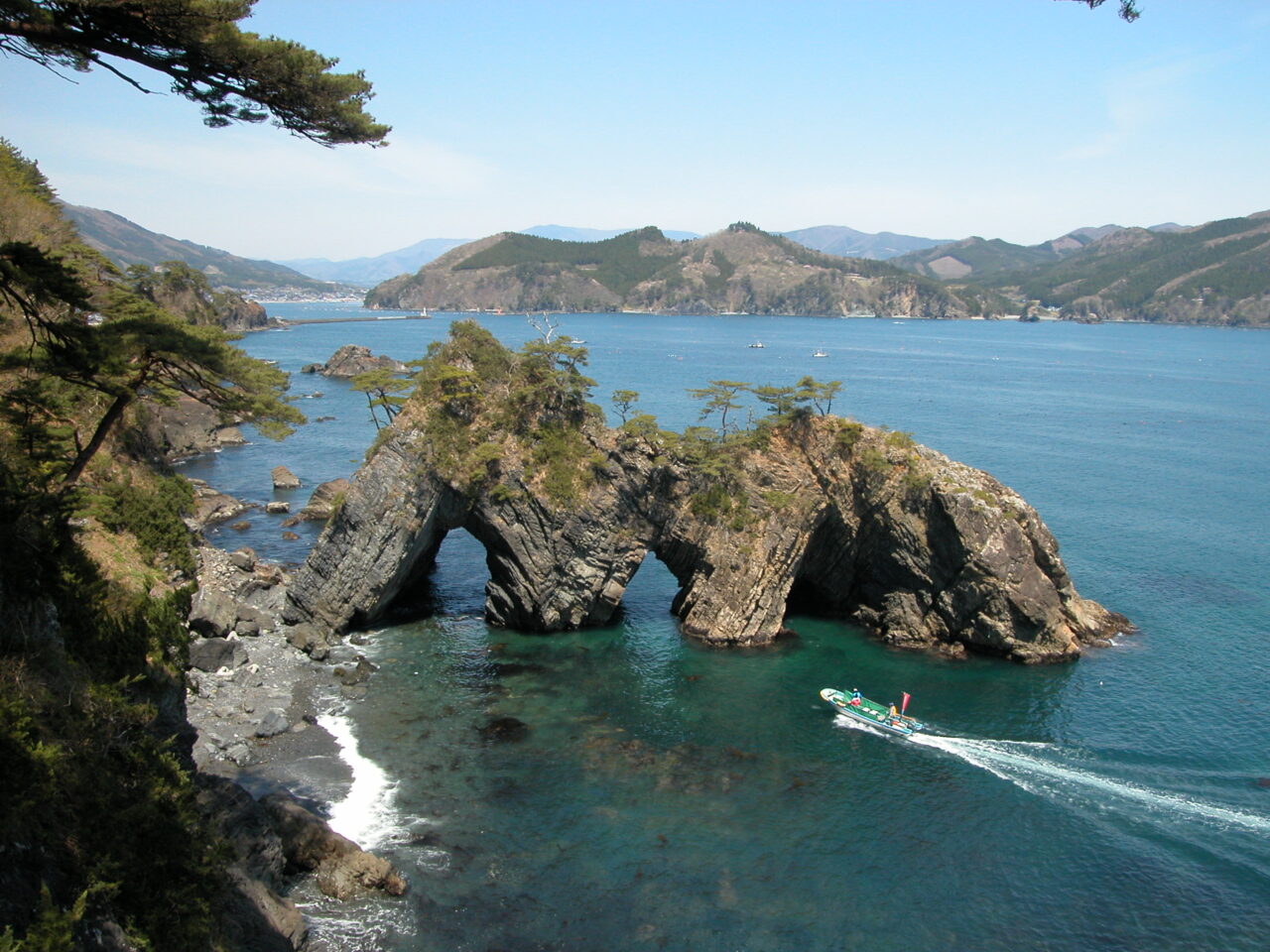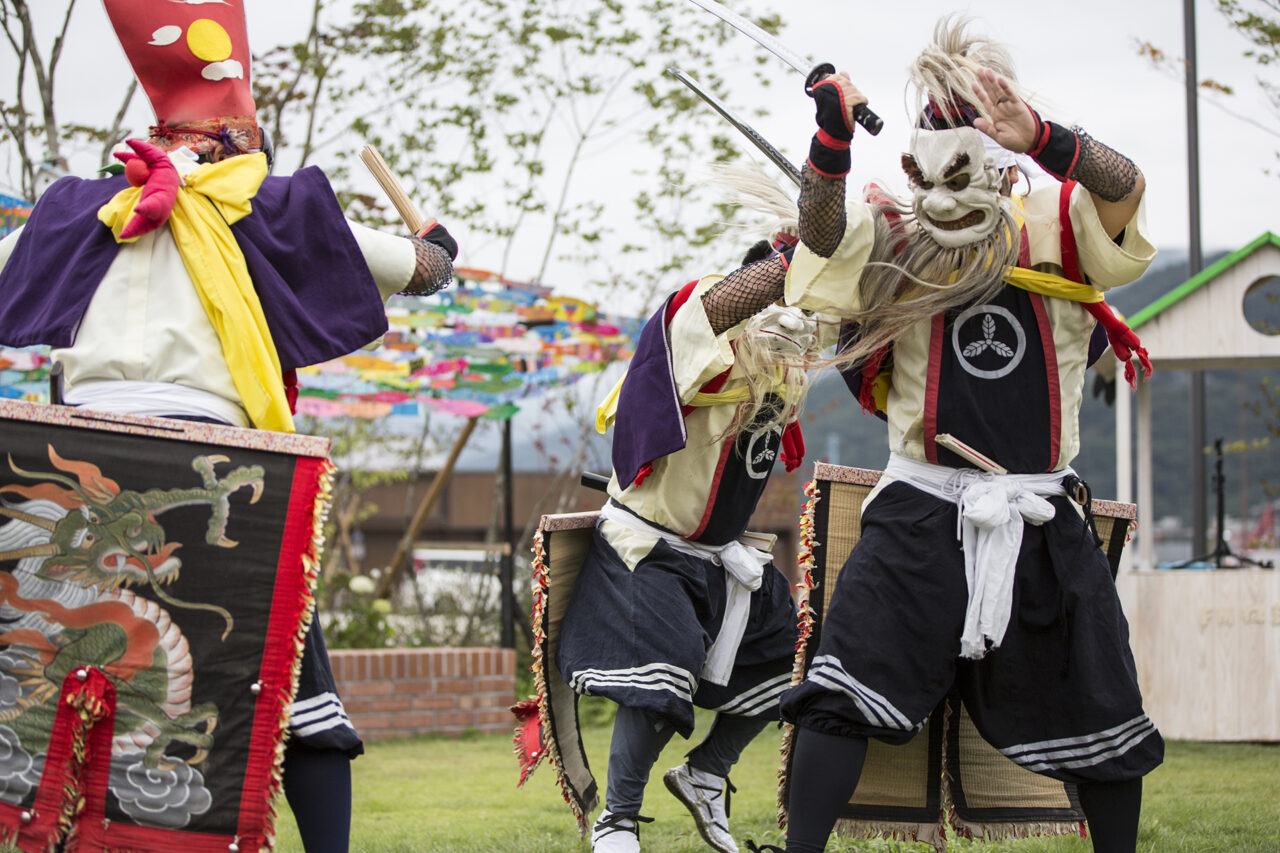EVENT
Suggested Route|Trip to Encounter Rich and Colorful Geinoh – 3 Days and 2 Nights Sep.23rd(Fri Holiday)-25th(Sun)
- 2022
- suggested-route
- Experience
- Appreciation
Route: From Tokyo to Ichinoseki to Ofunato
This 3-day, and 2-night route is one of the best ways to enjoy “Sanriku Kagaribi (Bonfire) Geinoh-sai,” one of the two biggest events of the Sanriku International Arts Festival this year. On the first day, we visit Chusonji Temple at the World Heritage site Hiraizumi, and Genbikei, a designated Natural Monument. On the second day, we watch “Sanriku Kagaribi (Bonfire) Geinoh-sai,” an event with many folk performing arts from the Sanriku coastal region. We also have an opportunity to appreciate many mosaic artworks along the coastal levee storm surge barrier. Enjoy them as you stroll along with the magnificent view of mountains and the sea. On the third day, we visit Iwate Tsunami Memorial Museum in Rikuzentakata, where we can learn lessons from the Great East Japan Earthquake.
With this trip, you can learn the past, the present and the future of Iwate.
What will be your lasting memories after returning from this trip?
Notes
- We present this route as an ideal way to enjoy Sanriku. Please note that we are not soliciting participants for a tour.
Accommodations and Transportations
- We designed this trip so that you can mostly rely on public transportation. Depending on the situation, you may consider using taxis or car rentals.
- Because of Sports Masters Japan 2022 Iwate on Saturday, September 24th, accommodations in the city have been heavily booked already. Please plan ahead accordingly.
- Because of COVID-19 concerns, public transportation schedules and business hours of venues and facilities, including retail shops, might vary. Please confirm with them in advance.
COVID-19 Infection Prevention Measures
- To prevent further coronavirus infections, please follow protocols and prevention measures at each event, facility and retail store.
Trip to Encounter Rich and Colorful Geinoh – 3 Days and 2 Nights Sep.23rd(Fri Holiday)-25th(Sun)
| Day1 Sep.23(Fri Holiday).2022 |
Visiting the historic temples of Hiraizumi World Heritage site.
| Itinerary | Remarks | |
|---|---|---|
| 08:48 | Depart Tokyo Sta. for Ichinoseki(11:23) | Tohoku Shinkansen ‘Yamabiko 53’ |
| 11:50 | Depart Ichinoseki Sta. for Chusonji-mae(12:12) | Iwate Prefecture Transportation bound for Ion Maesawa |
| 12:15 | Chuson-ji Temple | Explore on foot |
| 14:48 | Depart Chusonji-mae for Ichinoseki Station (15:10) | Iwate Prefecture Transportation bound for Ichinoseki Station |
| Hilight | Sansaikan Fujisei | Explore on foot |
| Kyo-Ya Somemono-Ten (dye shop) | Explore on foot | |
| Sekinoichi Shuzo (Sake Folk Cultural Museum) | Explore on foot | |
| 15:30 | Depart Ichinoseki Sta. for Genbikei-mae (15:50) | Iwate Prefecture Transportation Genbikei Line |
| 15:50 | Genbikei Gorge | Explore on foot |
| 16:30 | Sahara Glass Park | Explore on foot |
| 17:40 or 18:10 | Depart Genbikei-mae Sta. for Ichinoseki Sta.(18:01 or 18:31) | Iwate Prefecture Transportation Genbikei Line |
| Day2 Sep.24th(Sat),2022 |
Encounter Rich and Colorful Geinoh,Sanriku Kagaribi Bonfire Festival
| Itinerary | Remarks | |
|---|---|---|
| 10:17 | Depart Ichinoseki Sta. for Kesennuma Sta. (11:45) | JR Ofunato (for Kesennuma) |
| 11:57 | Depart Kesennuma Sta. for Ofunato Sta. (13:15) | JR Ofunato *BRT(for Sakari) |
| 13:30 | Kyassen Ofunato | Explore on foot |
| 14:35 | Sanriku Blue Line Project Exhibition | Explore on foot |
| 15:30 | Sanriku Kagaribi Bonfire Festival at Ofuna-port 16:30~21:00 | Explore on foot |
| Day 3 Sep.25th(Sun),2022 |
Learn, feel, and face the earthquake
| Itinerary | Remarks | |
|---|---|---|
| 09:11 | Depart Ofunato Sta. for Kisekino Ipponmatsu (Miracle Pine Tree) Station(09:51) | JR Ofunato Line BRT bound for Kesennuma |
| 10:00 | Iwate Tsunami Memorial Museum | The Miracle Pine Tree |
| | Lunch|Michinoeki Takatamatsubara | |
| 12:30 | Depart The Miracle Pine Tree Station for Ofunato Sta.(13:15) | JR Ofunato Line BRT bound for Sakari |
| 13:22 | Depart Ofunato Sta. for Morioka Sta.(16:31) | Iwate Prefecture Transportation Morioka Line |
| Hilight | Dinner|Morioka’s three typical noodle dishes | Around Morioka Station |
| 19:14 or 19:50 | Depart Morioka Sta. for Tokyo Sta.(21:23 or 22:04) | Tohoku Shinkansen ‘Hayabusa 44’or 46’ |
Day1
Sep.23th(Fri Holiday).2022
Visiting the historic temples of Hiraizumi World Heritage site.
| Itinerary | Remarks | |
|---|---|---|
| 08:48 | Depart Tokyo Sta.for Ichinoseki(11:23) | Tohoku Shinkansen ‘Yamabiko 53’ |
| 11:50 | Depart Ichinoseki Sta. for Chusonji-mae(12:12) | Iwate Prefecture Transportation bound for Ion Maesawa |
| 12:15 | Chuson-ji Temple | Explore on foot |
| 14:48 | Depart Chusonji-mae for Ichinoseki Sta. (15:10) | Iwate Prefecture Transportation bound for Ichinoseki Station |
| Hilight | Sansaikan Fujisei | Explore on foot |
| Kyo-Ya Somemono-Ten (dye shop) | Explore on foot | |
| Sekinoichi Shuzo (Sake Folk Cultural Museum) | Explore on foot | |
| 15:30 | Depart Ichinoseki Sta. for Genbikei-mae (15:50) | Iwate Prefecture Transportation Genbikei Line |
| 15:50 | Genbikei Gorge | Explore on foot |
| 16:30 | Sahara Glass Park | Explore on foot |
| 17:40 or 18:10 | Depart Genbikei-mae Sta.for Ichinoseki Sta.(18:01 or 18:31) | Iwate Prefecture Transportation Genbikei Line |
Tokyo Sta.

Tohoku Shinkansen ‘Yamabiko 53’
Dep.08:48
Arr. 11:23
Travel time| 2hrs 35min
Ichinoseki Sta.

Iwate Prefecture Transportation bound for Ion Maesawa
Dep.11:50
Arr. 12:12
Travel time| 22min
Chusonji-mae
12:15 Chuson-ji Temple
“Treasure Trove of Heian Era Arts: National Treasures and Precious Important Cultural Properties of MoreThan 3,000 Pieces”
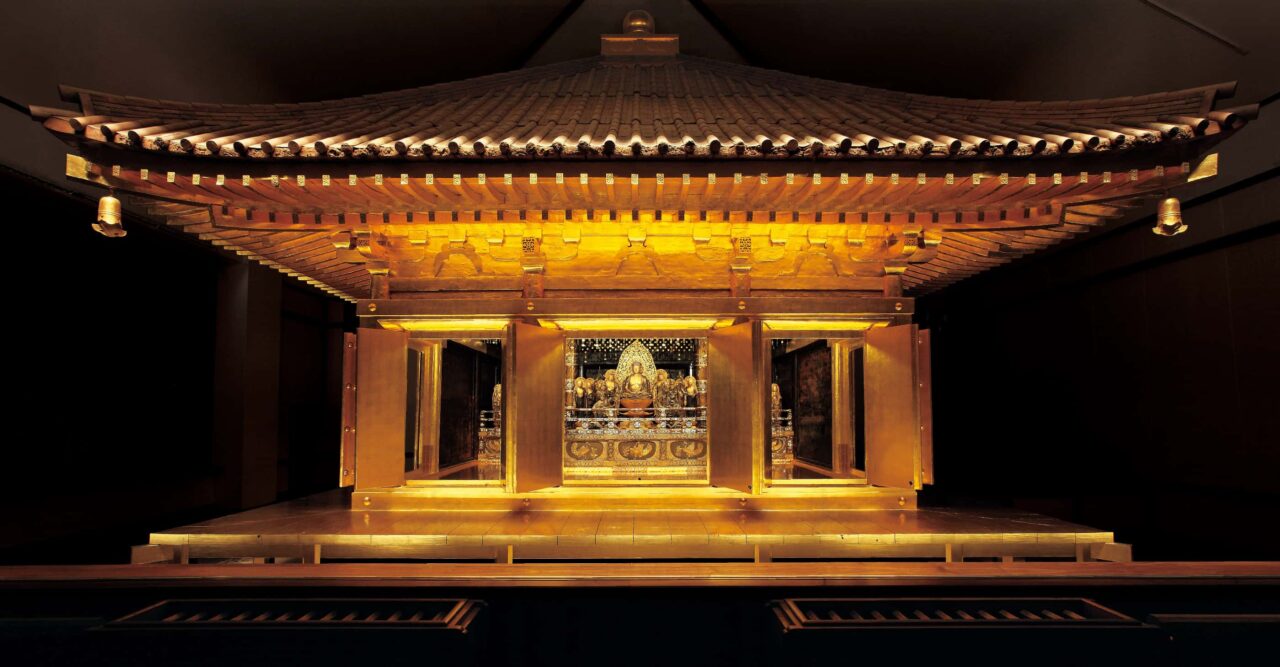
▲This temple was designed to materialize the idea of the Fujiwara Kiyohira, the first generation of the Oshu Fujiwara Clan, whose wish was to manifest paradise in this world.
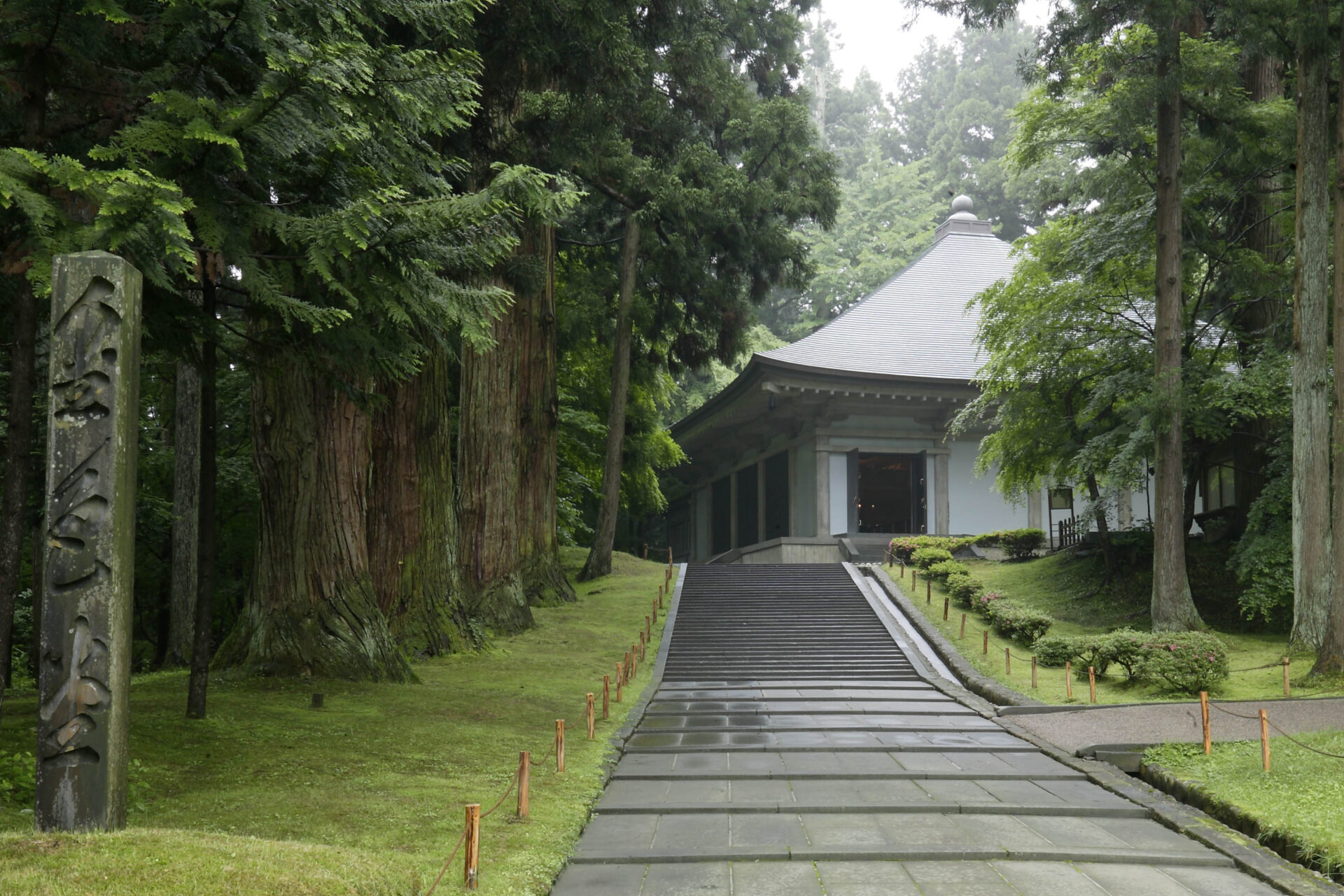
▲ Shinfukudo(Fresh verdure)
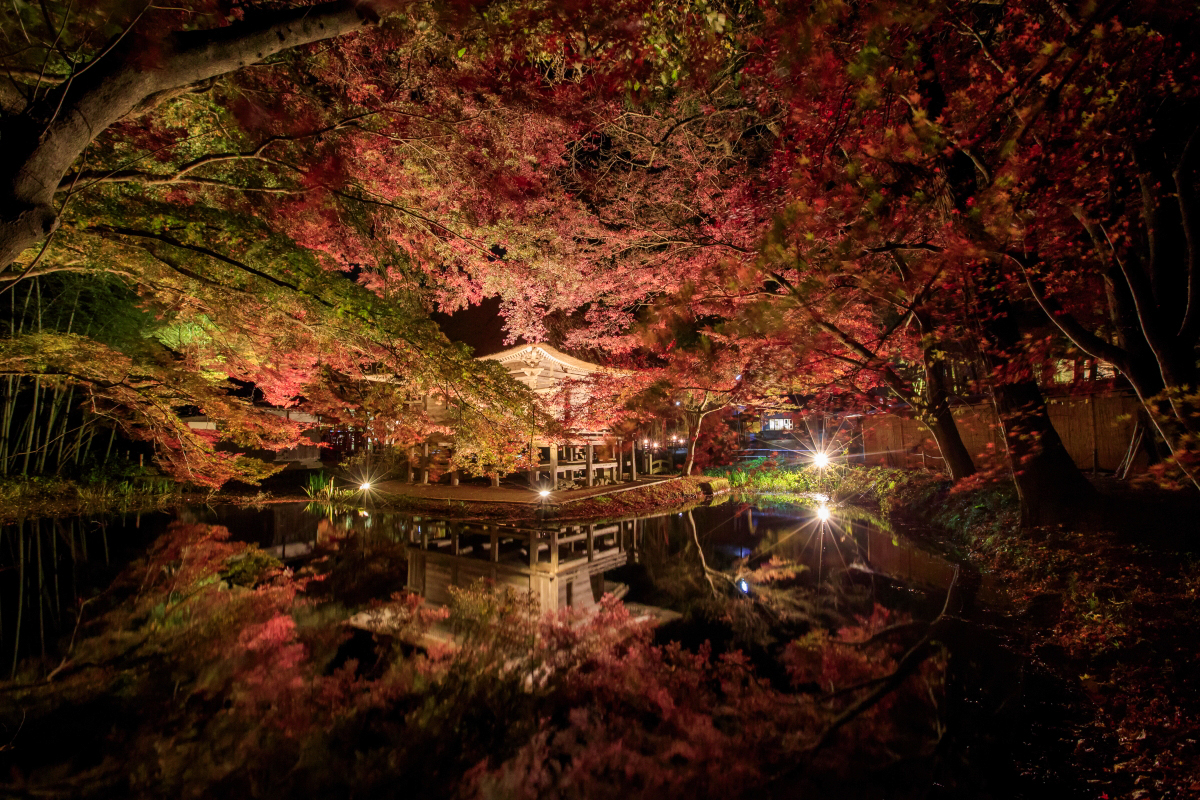
▲Benzaitendo (Illuminated during the evening)
Chusonji Temple registered as a World Heritage Site
On the grounds, where an elegant atmosphere of Heian-era Japan has been impressively preserved, there are more than 3,000 national treasures, important cultural properties and historic sites. They are important assets, which tell the story of the golden culture of the Fujiwara clan and their treasure trove of arts and crafts of the Heian Era. Konjikido uses abundant gold leaf, showing mother-of-pearl works made from turban shell, ivories and precious gems, and gold relief lacquerwares. These decorative crafts are truly breathtaking. Sankouzou houses many national treasures and important cultural properties. There are also informative exhibitions from which you can learn the restoration process of mother-of-pearl works. The view of red Japanese maple leaves in the fall, surrounded by the mystic stillness of the grounds is truly mesmerizing.
Office of Chusonji Temple
202 Koromonoseki, Hiraizumi-cho, Nishiiwai-gun, Iwate 029-4102
Phone|+81(0)191-46-2211
FAX|+81(0)191-46-2216
Opening hours: 8:30 am to 5:00 pm (from March 1 to November 3) / 8:30 am to 4:30 pm (from November 4 to February 28/29 on leap year)
Four Admissions Categories: Adults 800JPY ,high-school students 500JPY, middle school students 300JPY, and elementary school students 200JPY
Chusonji-mae

Iwate Prefecture Transportation bound for Ichinoseki Station
Dep.14:48
Arr. 15:10
Travel time| 22min
Ichinoseki Station Area
These are points of interest we have chosen, including three long established businesses in the area that have been caring members of the community for more than a century.
Sansaikan Fujisei
With Mochi-zen, a traditional local cuisine with mochi in Ichinoseki, one can enjoy many bite-size tasty delicacies.
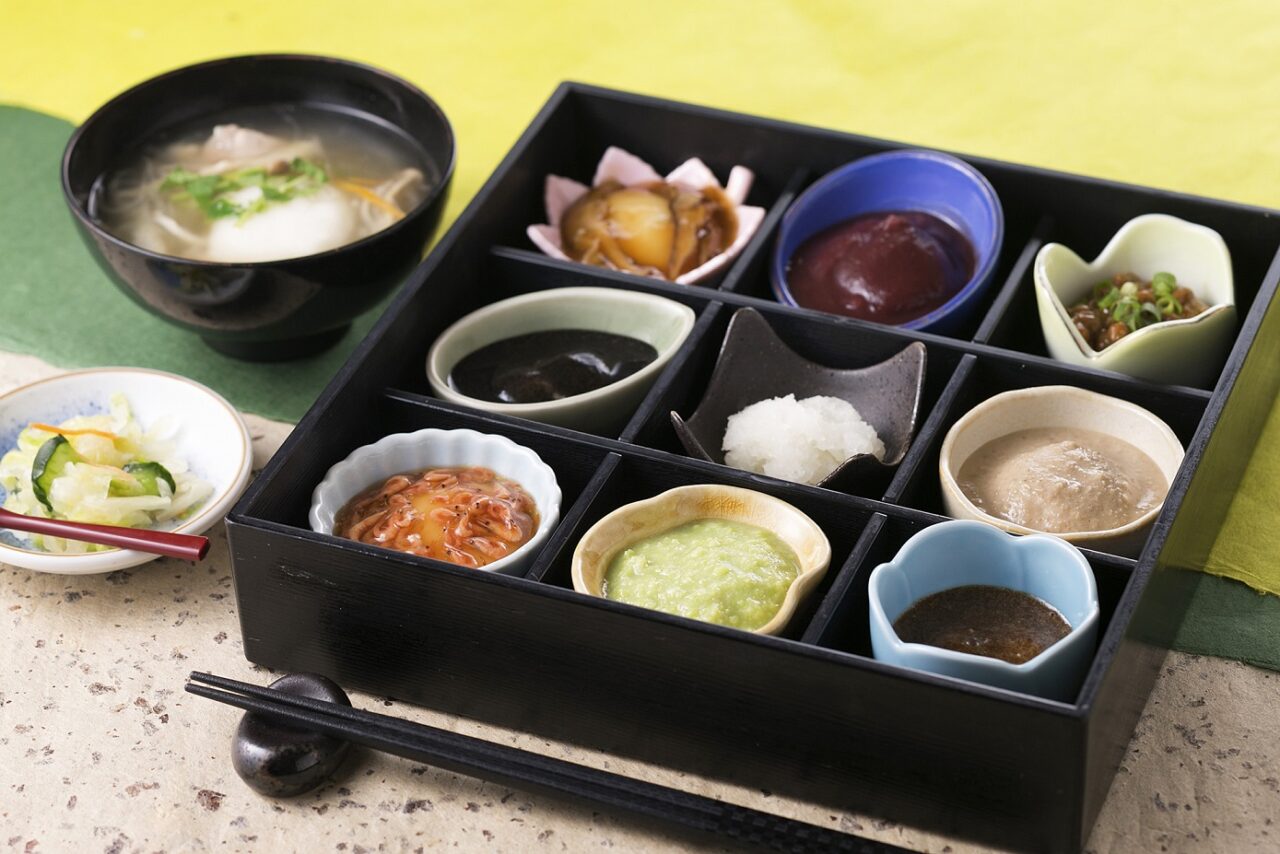
▲ Original one-bite mochi-zen (Large)
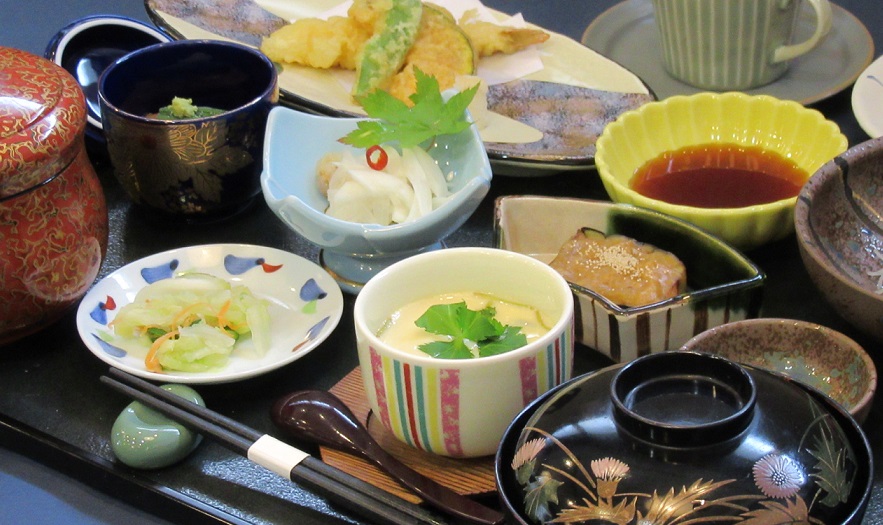
▲Monthly lunch plate
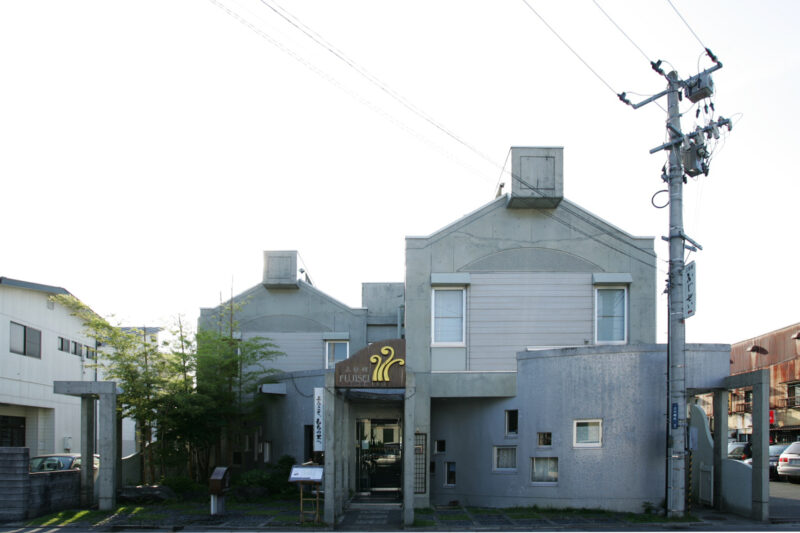
▲ Exterior of the restaurant
“original” bite-sized mochi cuisine
This dish is a modern version of the traditional local mochi cuisine. Divided into the nine compartments of a Shokado bento box, eight kinds of one-bite sized mochi are plated, along with a bowl of zoni (mochi soup). One can enjoy nine kinds of traditional mochi cuisines, including anko mochi (red bean paste), zunda mochi (mashed edamame), kurumi mochi (walnut), june mochi(wild sesame), natto mochi (fermented soybeans), shoga mochi (ginger) and freshwater shrimp mochi, together with a bowl of zoni that has many different kinds of ingredients. In the center of the Shokado box, vinegared daikon radish, namasu, is plated as a refreshment. This is a delightful mochi dish with mindfully chosen locally sourced ingredients and is accompanied by helpful explanations of the dishes. The monthly lunch plate and Omotenashi-zen plate are also popular.
Sansaikan Fujisei
3-53 Kamiotsukikoji, Ichinoseki-shi, Iwate 021-0882
Phone|+81(0)191-23-4536
Closed on Mondays
Lunch: 11 am to 2 pm
Dinner: varies due to the pandemic
Kyo-ya Somemono-ten (dye shop)
This shop was established 104 years ago in a castle town of the southern region of Iwate.
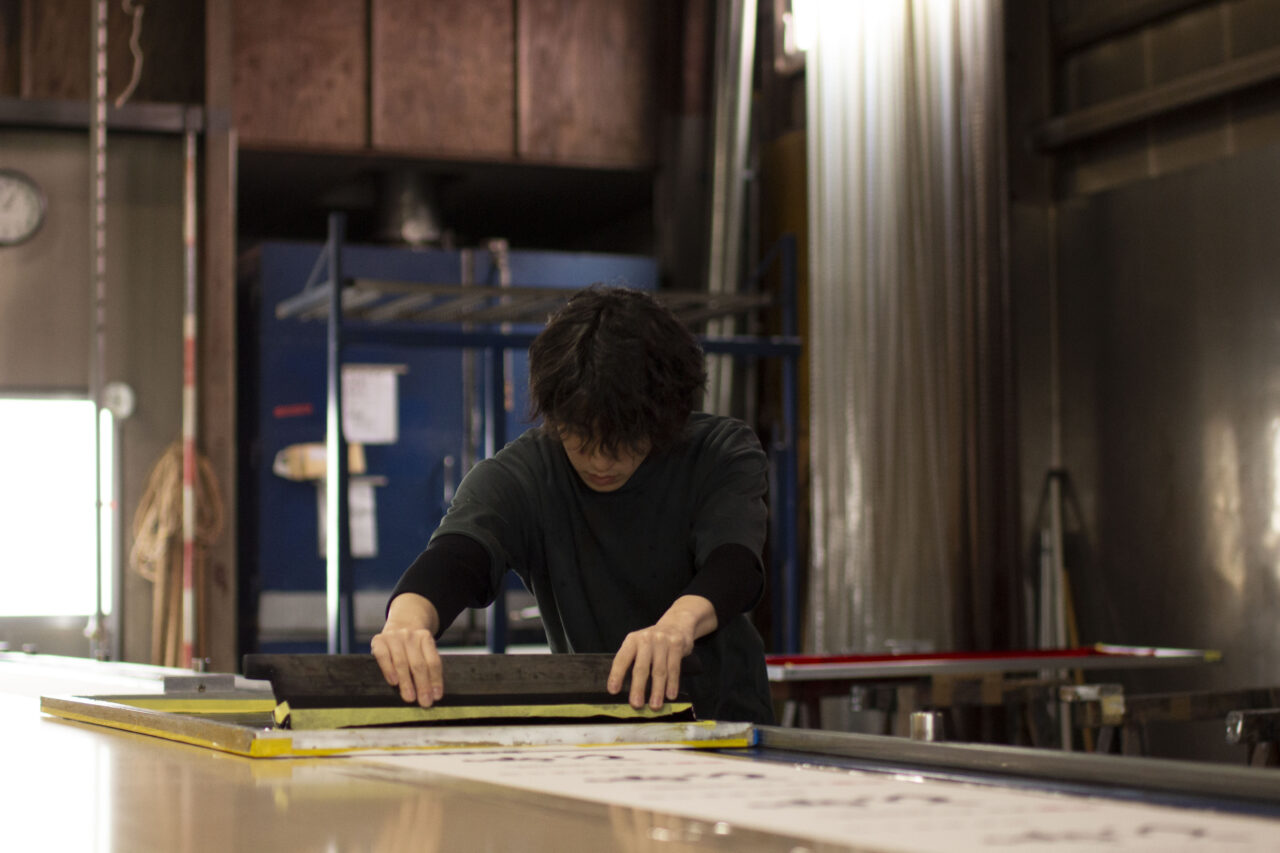
▲ Their dye process
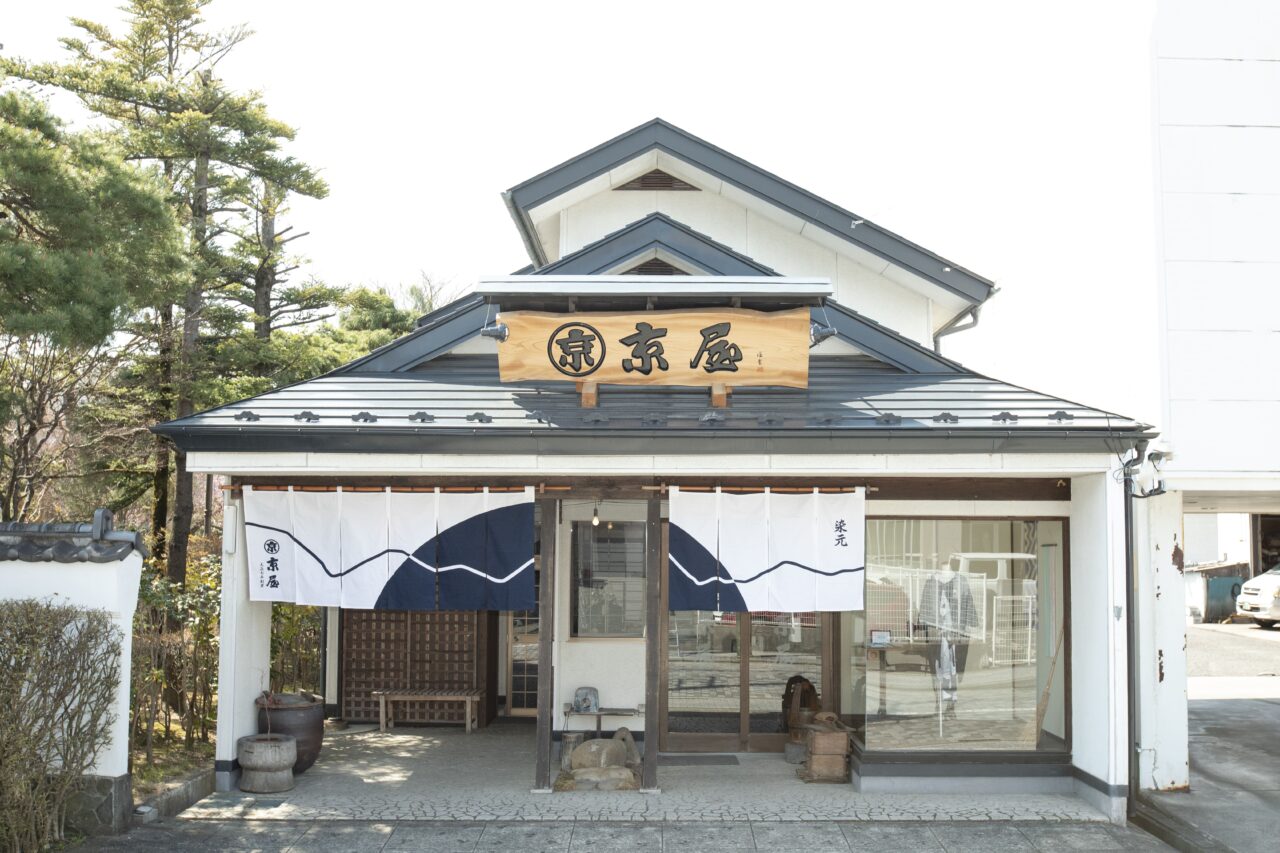
▲Exterior of Kyo-ya
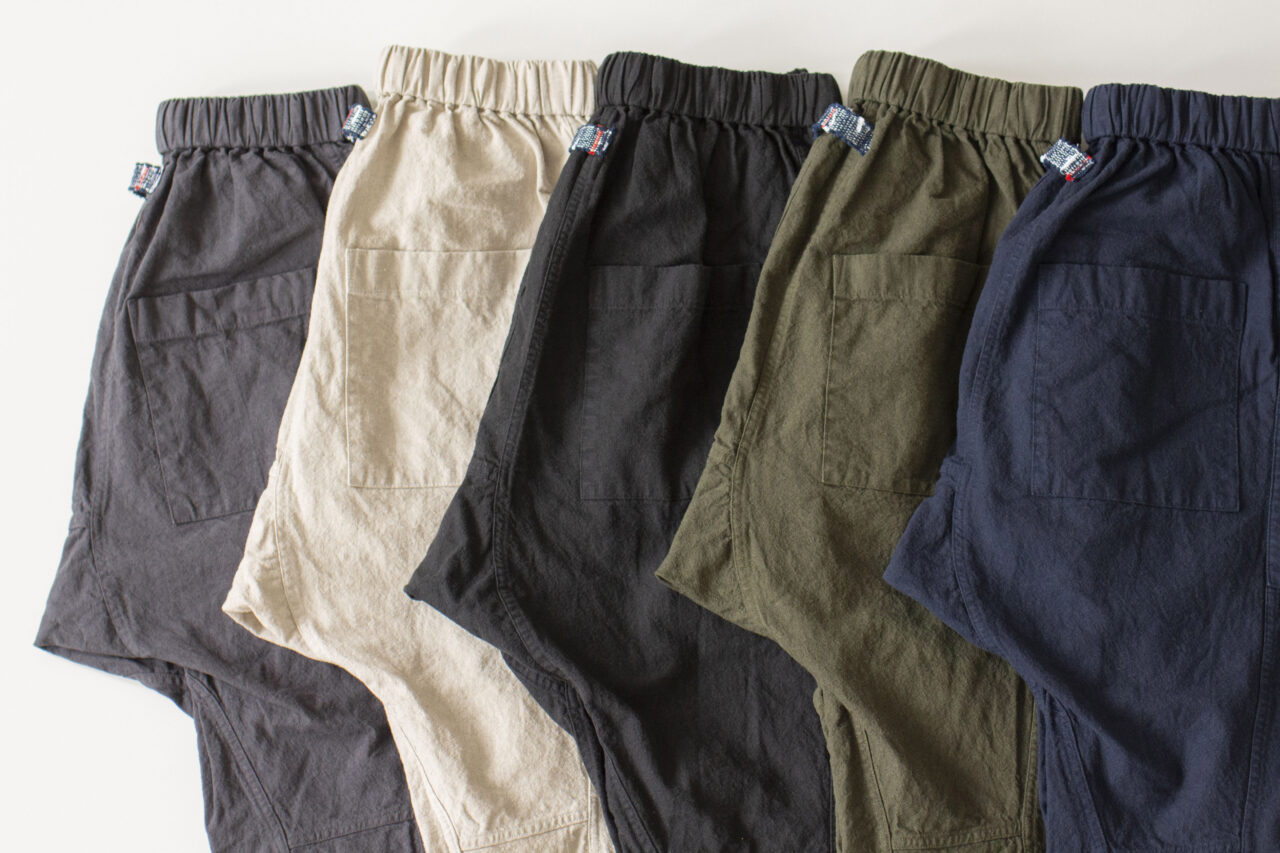
▲ Their original branded bottoms
“Transforming Love into Products, One by One”
Thoughts into shape, carefully crafted one by one.
This is an old dye shop established 104 years ago. Not only producing traditional wears like hanten and yukata,they also have their original brand called “en・nichi.” and a select online shop called Ennichi, which sells daily necessities selected from all over Japan. As an establishment involved in local festivals and folk performing arts for over a century, they have inherited the skills of craftsmanship to produce custom-made items every day. They also apply their skills to their brand “en・nichi” to create everyday clothing.
*Factory tours and dye classes can be arranged by making a reservation.
Kyo-ya Somemono-ten (dye shop)
7-28 Otemachi Ichinoseki -shi,Iwate,Japan 021-0884
Phone|+81(0)191-23-5161
FAX|+81(0)191-23-3660
Closed on Saturdays, Sundays and Holidays
Open Hours: 10 am to 5 pm
Sekinoichi Shuzo (Sake Folk Cultural Museum)
Aspiring to brew the best sake that delights everybody
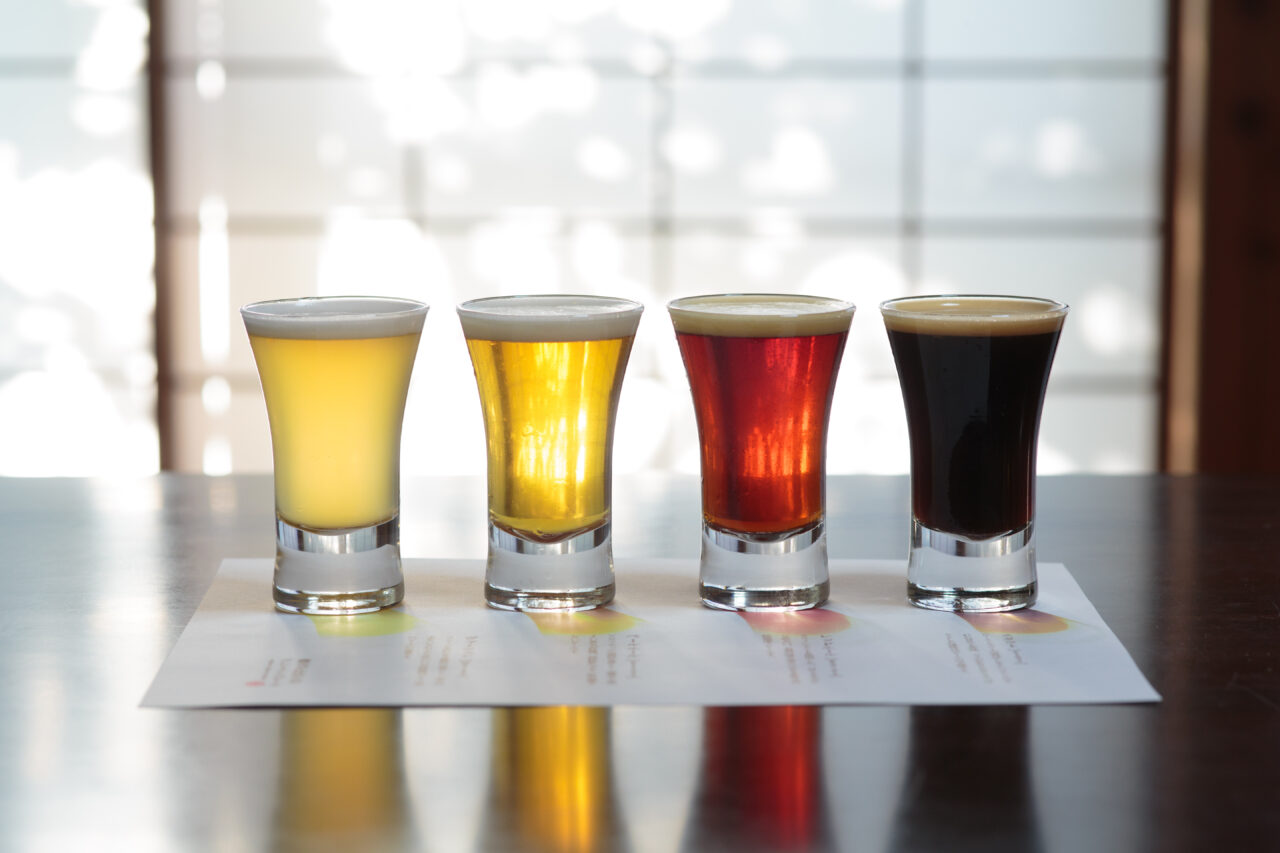
▲ Tasting of four kinds of beer
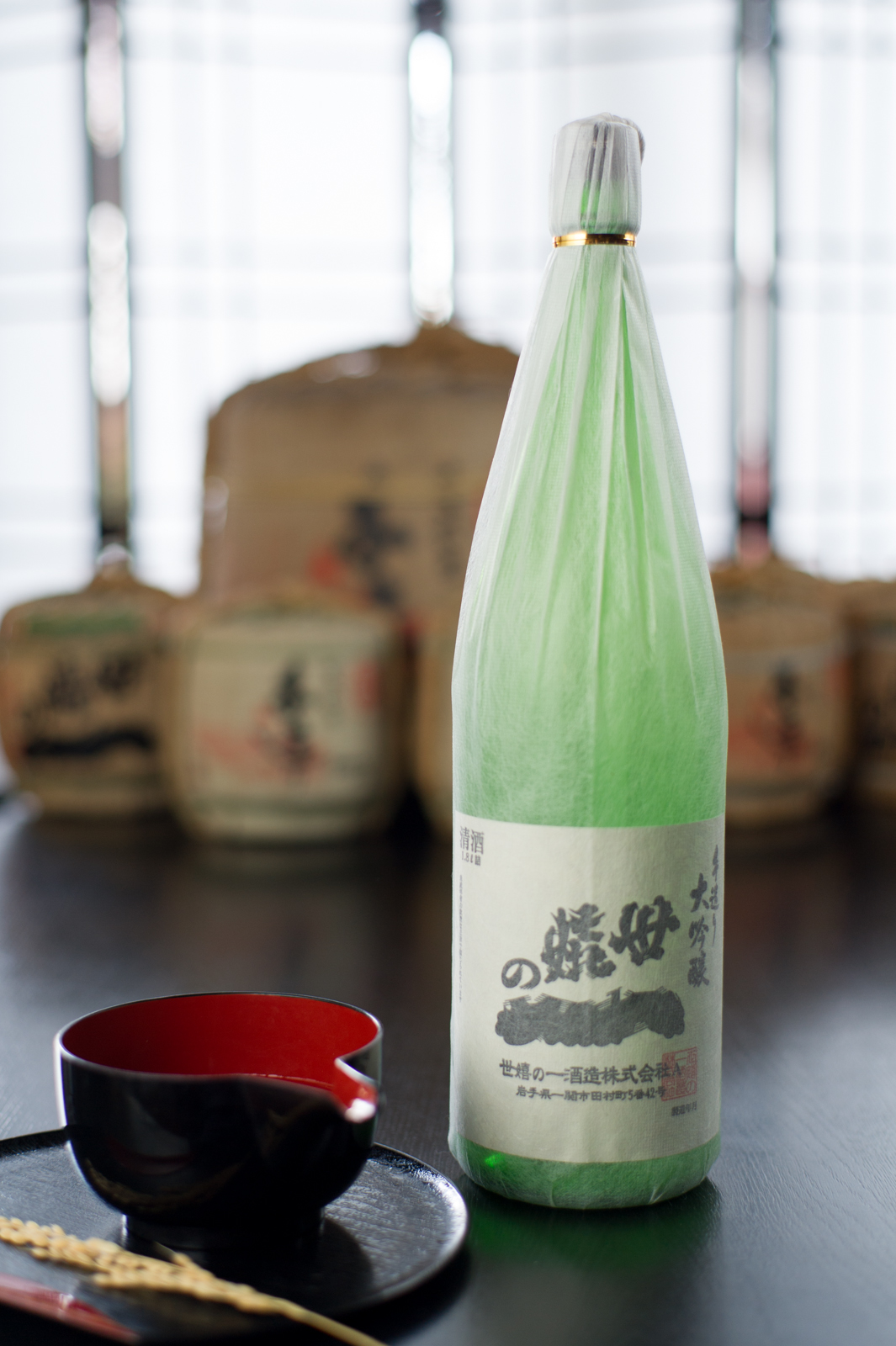
▲ 1.8 liter Daiginjo Sake
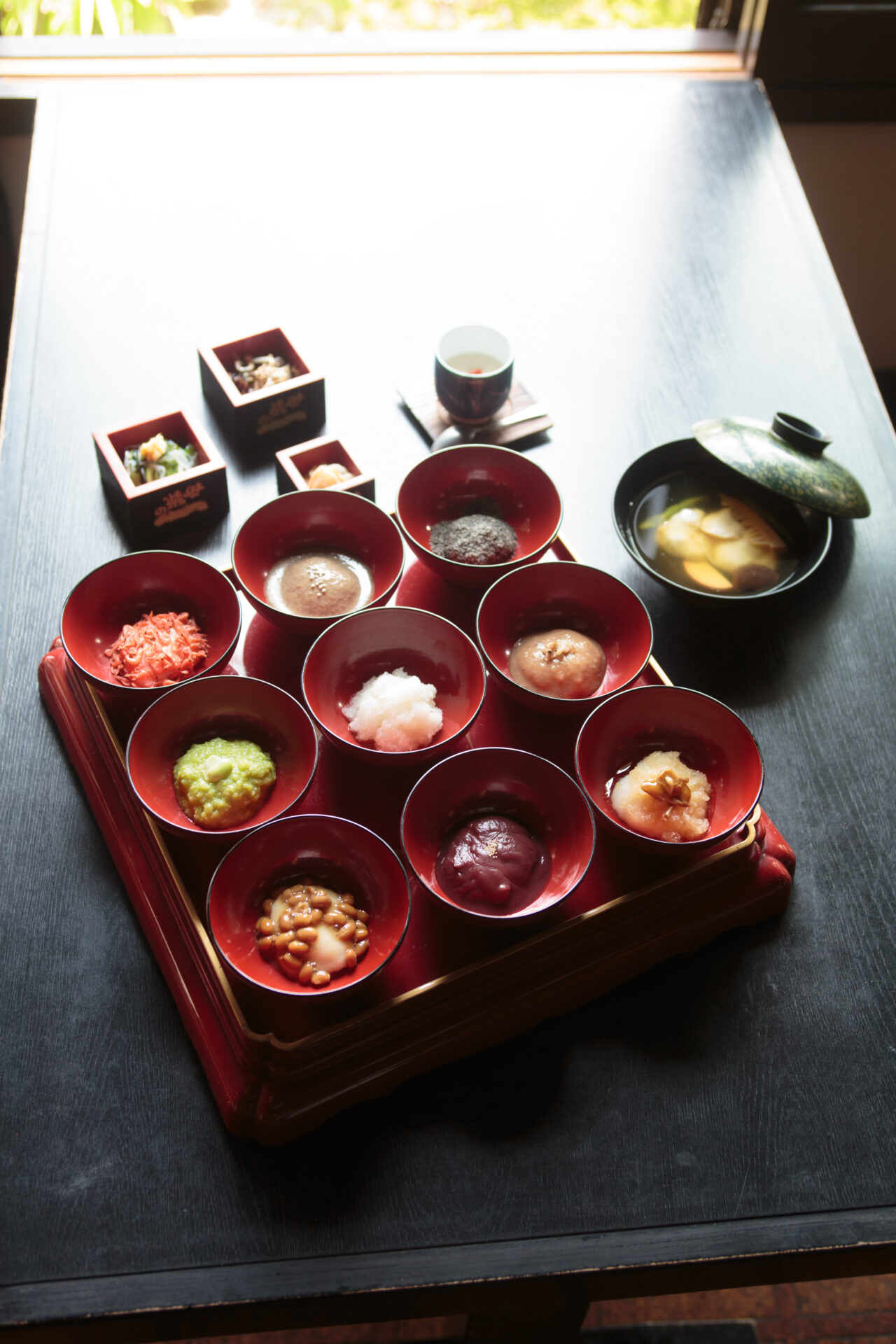
▲Sekinoichi’s mochi
Sake brewery tour with local sake and beer tasting
Established in 1918, this is a sake brewery that meticulously brews sake based on the historic and traditional methods of the house. One can enjoy locally brewed seishu sake called Sekinoichi and a craft beer called Iwate Kura Beer. At their restaurant, one can enjoy Ichinoseki local mochi cuisine and Hatto dishes, along with seasonal dishes of locally sourced ingredients. Brewery tours and sake tastings can be arranged to enjoy delicious sake and deepen one’s knowledge of sake. Locally brewed beer tasting is a popular attraction as well. One can learn Ichinoseki sake culture at their Sake Folk Cultural Museum.
Sekinoichi Shuzo
5-42 Tamuracho Ichinoseki-shi, Iwate,Japan 021-0885
TEL|0191-21-1144 FAX|0191-21-1143
Closed on Tuesdays and Wednesdays
Business Hours: 11 am to 3 pm
Beer Factory Tour: Admission Free
Beer Factory Tour with 4 Kinds of Beer Tasting: 1,200 yen
Let’s go to Genbikei Gorge!
Ichinoseki Sta.

Iwate Prefecture Transportation Genbikei Line
Dep.15:30
Arr. 15:50
Travel Time|20min.
Genbikei-mae Sta.
15:50 Genbikei
Beautiful Valley of ”-Stillness-” and “-Motions-” – Enchanted by the Mysterious World
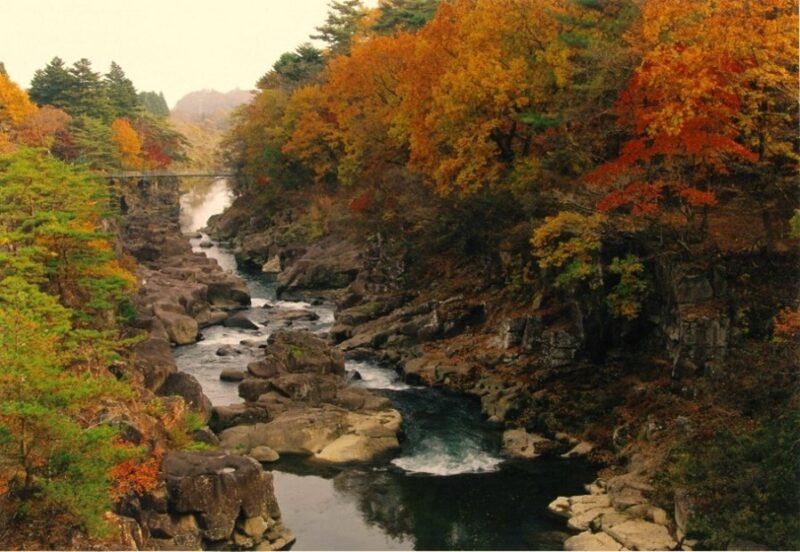
▲Scenic Place and Natural Monument of the Nation
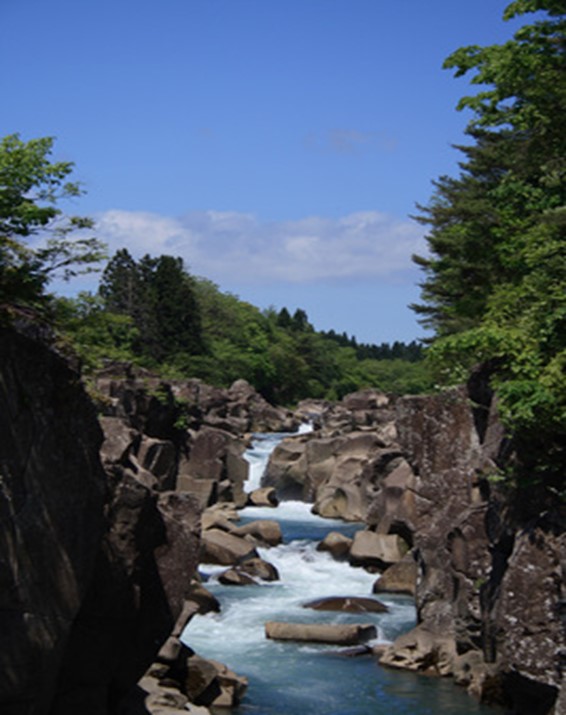
▲ Natural beauty was created by the erosive action of the Iwai River, which runs through the valley from Mount Kurikoma to the city of Ichinoseki.
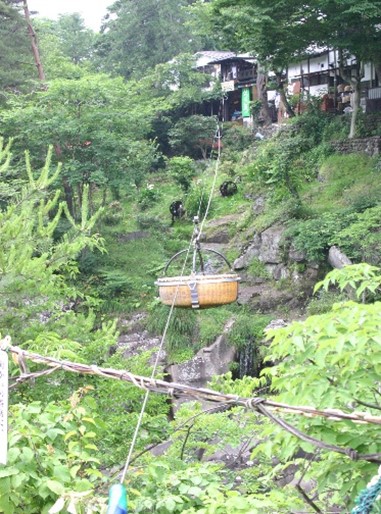
▲ A famous delicacy from Kenbikei, “Soratobu Kakkou Dango (flying Kakkou rice dumplings)”
Kakkou dumplings are transported in a basket from the opposite side of the river by a ropeway.
*Because dumpling shops are closed when sold out or by around 3 pm, we only give information and do not plan to visit during the tour.
Dynamic Natural Beauty with the Full Array of Seasonal Colors
The natural beauty of the valley, which stretches over approximately 2 kilometers, is composed of emerald green streams, unusual rocks, gigantic rocks, sinkholes, abysses and waterfalls. When walking on the paths, the contrasting scenes of rough flows of water upstream and gentle flows downstream can be seen from a suspension bridge. The valley has been designated as a Scenic Place and Natural Monument of the nation. One cannot help being fascinated by the beauty of the valley, as it is woven together with the landscape and the vivid colors of four seasons in constant change. “Soratobu Kakkou Dango (flying Kakkou rice dumplings),” a delicacy of Kenbikei, is transported from the opposite side of the stream in baskets via ropeway, and is quite popular.
Ichinoseki Tourism Association
Aza Takinouechinai, Kenbicho, Ichinoseki-shi, Iwate,Japan 021-0101
Phone|+81(0)191-23-2350
Accessible Year Round
The Best Season for Cherry Blossoms: Late April – Early May The Best Season for Autumn Foliage: Mid-October – Early November

Approx. 3-min walk
16:30 Sahara Glass Park
Theme Park of Glass Full of Beautiful Glass Works from Around the World!!
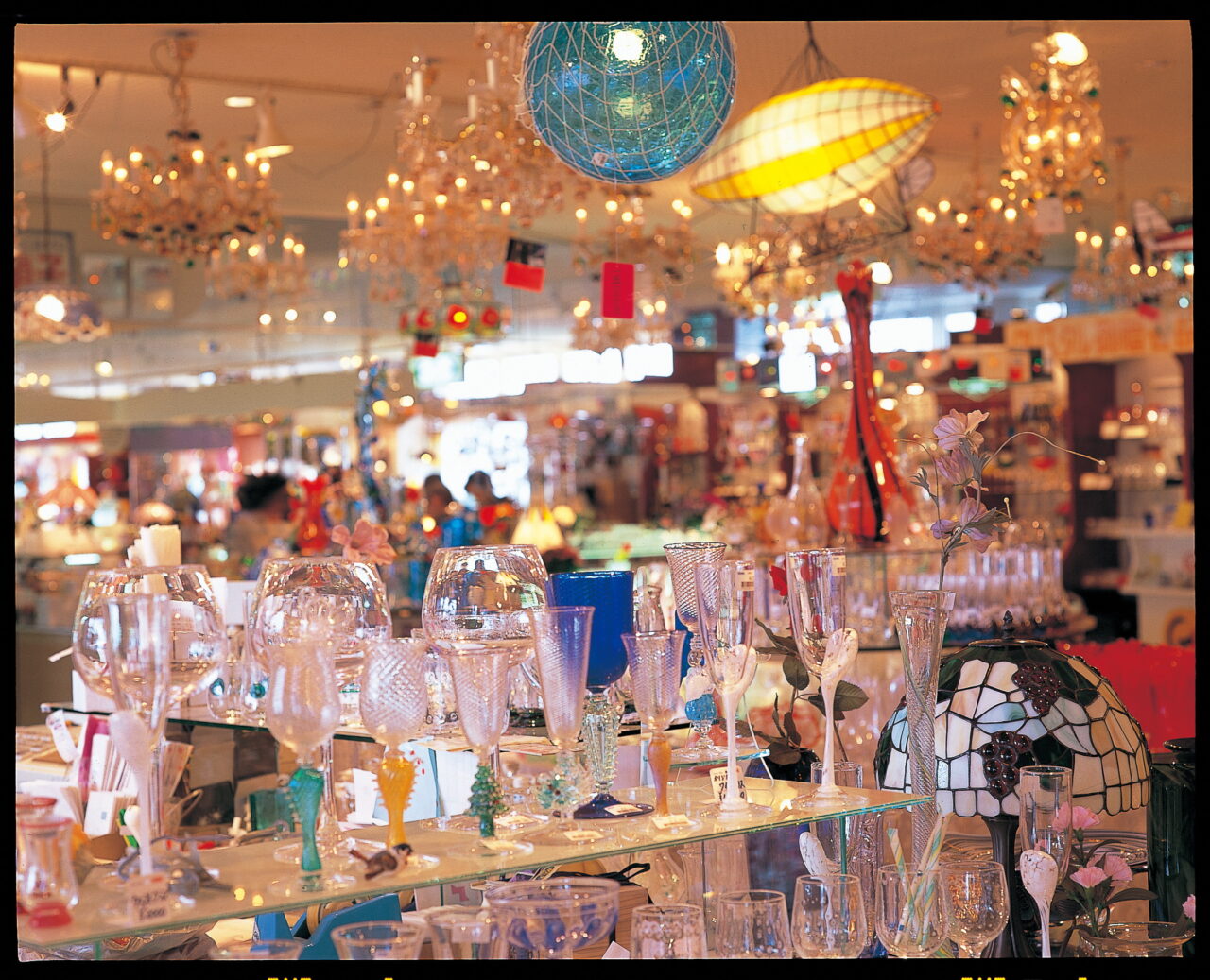
▲Glass works of many different colors
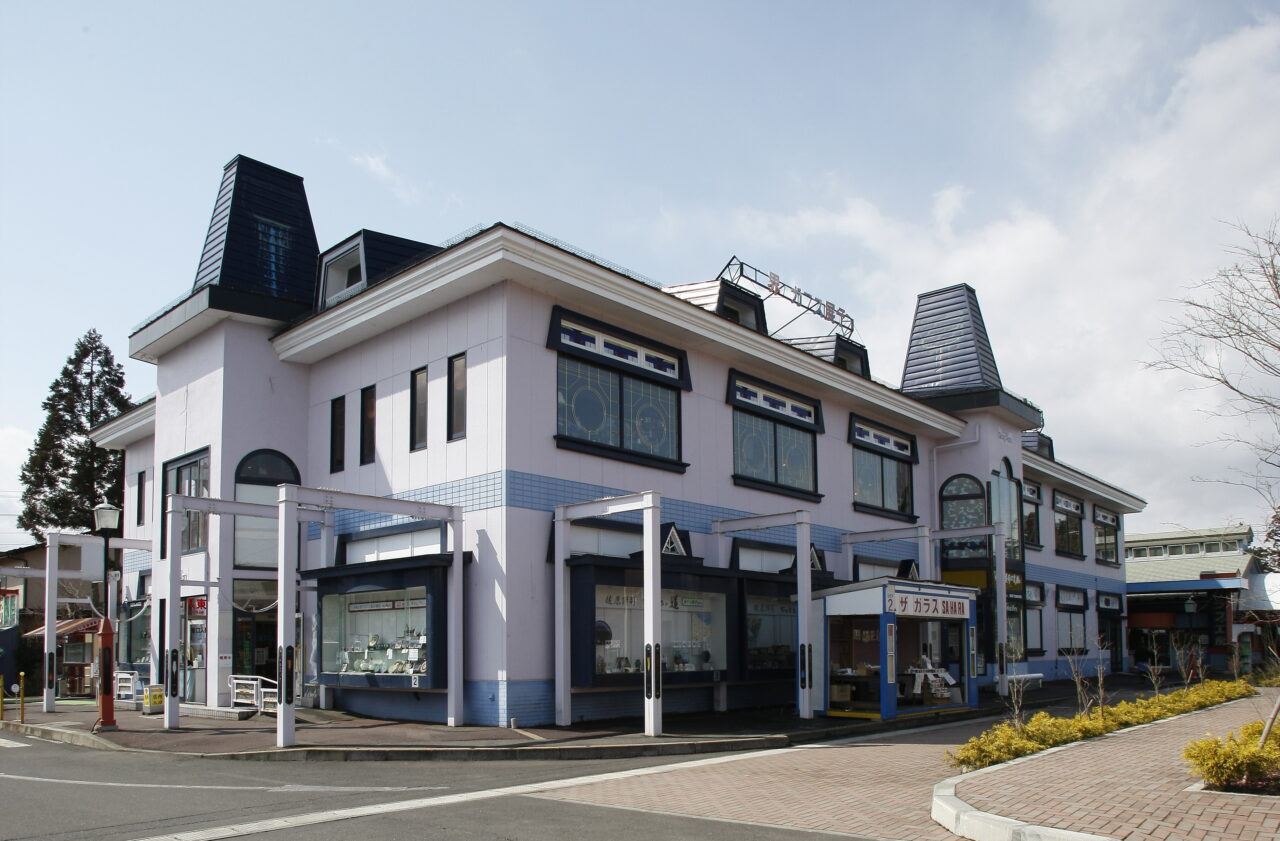
▲ Exterior of the Glass Park
Photogenic sights and scenes all over the Park
Glass works from not only Japan but all over the world, including ones created by well-known artists, are exhibited in this nostalgic space and available for purchase. Approximately 100,000 colorful glass works, spread out all over the ample space, shine vividly in the shop. At the glass studio, one can observe the process of making glass works with the hand-blown technique. You can fully enjoy the world of glass art created by the masterful hands of glass artisans. You can also try creating your own original glass works in the studio. Exciting and stimulating shiny glass pieces are truly Insta-worthy!
Sahara Glass Park
263-1 Aza Takinoue, Genbi-cho, Ichinoseki-shi, Iwate,japan 021-0101
Phone|+81(0)191-29-2288
FAX|+81(0)0191- 29-2888
Open Year Round Except for the Year-end and New Year’s Days Hours: 9:00 am – 5:30 pm (closes at 5 pm between December and March)
Genbikei-mae Sta.

Iwate Prefecture Transportation Genbikei Line 12′
Dep.17:40
Arr. 18:01
or
Dep.18:10
Arr. 18:31
Travel Time|21min.
Ichinoseki Sta.
Accommodations in Ichinoseki
Areas
Artists
-
Unotori Kagura Preservation Society
The Unotori Kagura is a typical yamabushi (mountain hermit) kagura. It worships shishigashira into which the spirit from Unotori Shrine in Torii, Fudai village entered. It tours villages to pray for a rich haul, a bountiful crop and safety of family from January to March every year. The tour proceeds in Iwate, northbound to Kuji city and southbound to Kamaishi city in alternating years. Local residents host the kagura intimately calling “Unotori sama.” Since this form of the tour is unique and it maintains rare customs, Unotori Kagura is designated as the Intangible Folk Cultural Property by the state in 2015.
-
Sugenokubo Shishiodori/Kenbai
The Sugenokubo Shishiodori is a dance imitating wild deer’s vigorous motion with deer-shaped headdress.
In ancient time, when Takemikazuchi-no-mikoto landed on the shore of Lake Kasumigaura in Ibaraki prefecture and the native people attempted to kill him by setting fire to the field, numerous deer showed up, repeatedly plunged into the water and ran around to extinguish the fire. Deeply moved to see this, Mikoto created the shishiodori.
It is unique to the Sugenokubo school that shishiodori and kenbai are performed swiftly interchanging. The dance is impressive in its dynamism of dancing with the gilt on the deer horns which sparkles reflecting the fire.
It is designated as the Intangible Folk Cultural Property by Iwate prefecture in 1988. -
Ushifushi Nenbutsu Kenbai
In 1190, Chinzei Hachiro Tametomo’s third son, Minamoto no Tameyori, was granted his territory in Hei and Kesen by Minamoto no Yoritomo, the first shogun of the Kamakura shogunate. He built a castle in Nejo, Roki, and took on the name of Hei Yorimoto.
Yorimoto built Kegon-in temple in dedication to the soul of his father, where he had 27 soldiers dance for the souls of ancestors and of the Minamoto clan and also of its rival Taira clan killed in the war. This is believed to be the origin of the Ushifushi Kembai.
During the annual Bon Festival in August, the dancers go around houses in the area to appease the souls of ancestors and the recently departed. On the 16th, it ritually performs its kembai and nanatsu-odori (seven-item dance) at the Kegon-in temple in Kebaraichi to pray for the dead. -
Nanbuhan jyusyoin Nengyoji Daikagura
In 1688, when the shrine of Ozaki Daimyojin, the guardian deity of Kamaishi, was built, the Sano family, the official paymaster of the Nambu domain, donated a large hexagonal portable shrine in which the sacred body was enshrined, and received guidance from Morioka Shichikencho, the Nambu domain’s official bill administrator. They were then officially appointed as a nengyoji annual leader by Jushoin temple which, in charge of rituals for Takegawa Inari Shrine in Morioka, presides over ten regional nengyoji in the Nambu domain.
-
Otsuchi Toramai Kyogikai
The troupe was formed as toramai section in the association of the preservation societies of the folk performing arts in Otsuchi town in 1990. Comprised of four toramai groups in the town; Ando, Mukaigawara, Rikuchubenten and Otsuchi-Shiroyama, the troupe aims at cultivation of friendship between the groups, mutual empowerment and social contribution.
The great earthquake of March 2011 damaged all the four groups. Overcoming the loss of the fellow members, the costumes and other equipment, they reunited for the revival and transmission. They have been actively performing the dance nationwide since then, to show their gratitude for help and support they received. In their repertory are Yaguruma, Hanetora, Sasabami, Jinkuodori, and Teodori among others. -
Kita Shichifukujin
The Shichifukujin-mai of Kita represents the seven gods of good fortune, popular gods in folk belief named Daikokuten, Ebisu, Fukurokuju, Bishamonten, Jurojin, Benzaiten and Hotei. It is performed in festivals held to pray for good harvest and big catches in the sea, and also on occasions year-round to pray for prosperity and exorcism at such celebratory events as wedding parties, new home construction and the launchings of new sea vessels. It has been handed down by volunteers from Kita since the 1910’s, and performed for the annual festival of Kurosaki Shrine, including the O-Ise-sama (aka Daijingu-sama) Festival held once every four years. In recent years, the Shichifukujin-mai of Kita has been practiced as a folk art by local elementary and middle school children as well.
-
Gyozanryu Sasazaki Shishiodori Preservation Society
In 1768, a man named Risota returned home from Shizugawa village (today,Minamisanriku Town,Motoyoshi District,Miyagi Prefecture) in Motoyoshi district, bearing a scroll certifying him as the inheritor of this dance. He was later adopted by the Osorei family in Sasazaki, Ofunato, and introduced the dance to the district. The chief of the Date clan praised the dance and granted Risota the akakuyo (red nine-star) crest of a fief-holder, the epithet of “gyozan,” (which means “rare,” “extraordinary”) and the frontal cloth with bird feathers. This is the precious ancestral heritage.
Contact
■Contact
NPO Iwate Arts Support Center
3F Morioka Odori Bldg. 15-7 1-chome Minami Odori, Morioka, Iwat e 020-0874
TEL|+81(0)19-656-8145
FAX|+81(0)19-656-8146
MAIL|sanfes@iwate-arts.jp
Sanriku International Arts Festival 2022 REVIVE
– An FY 2022 Japan Cultural Expo Project Presented and Co-presented by Japan Arts Council and Agency for Cultural Affairs, Government of Japan

Organized by|Sanriku International Arts Committee, Japan Arts Council, and Agency for Cultural Affairs, Government of Japan
Co-organized by|Hachinohe City, Hashikami Town, Hirono Town, Kuji City, Noda Village, Fudai Village, Tanohata Village, Iwaizumi Town, Miyako City, Yamada Town, Otsuchi Town, Kamaishi City, Ofunato City, Rikuzentakata City, Sumita Town, Sanriku Railway Co., Ltd., Japan Folk Performing Arts Association, NPO Iwate Arts Support Center, and NPO Japan Contemporary Dance Network
Cooperated by|NPO Shinsai Regain, imajimu LLC, Tohoku Cultural Property Video Research Institute, Minna no Shirushi LLC
